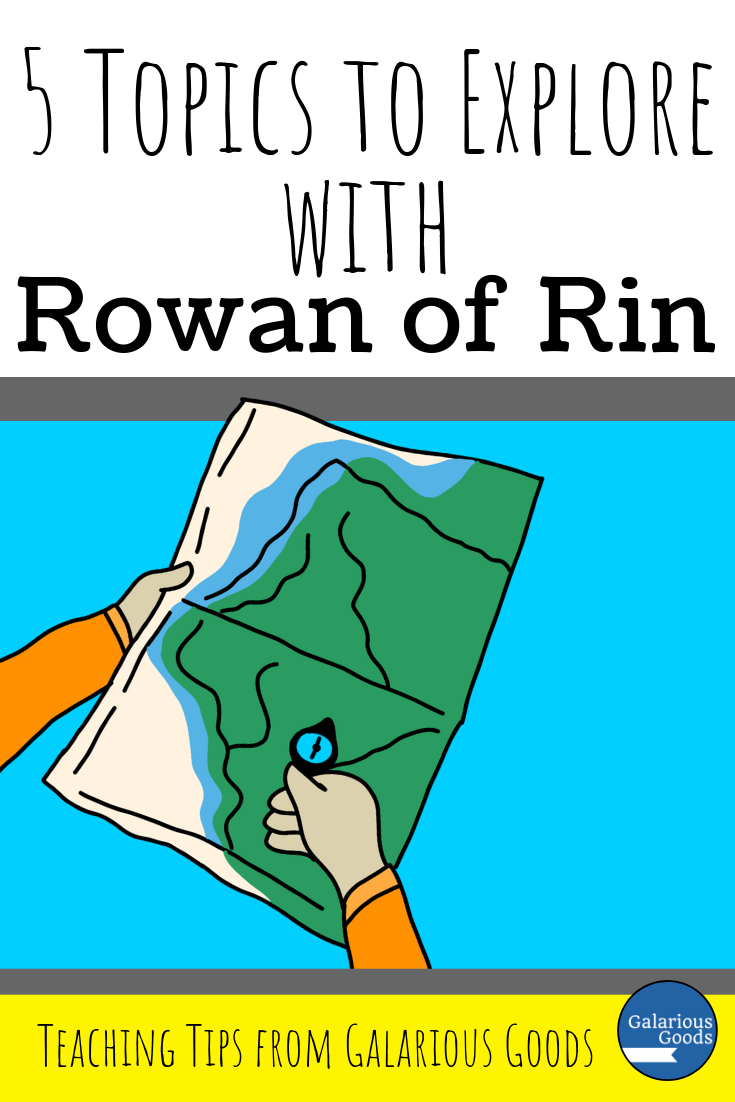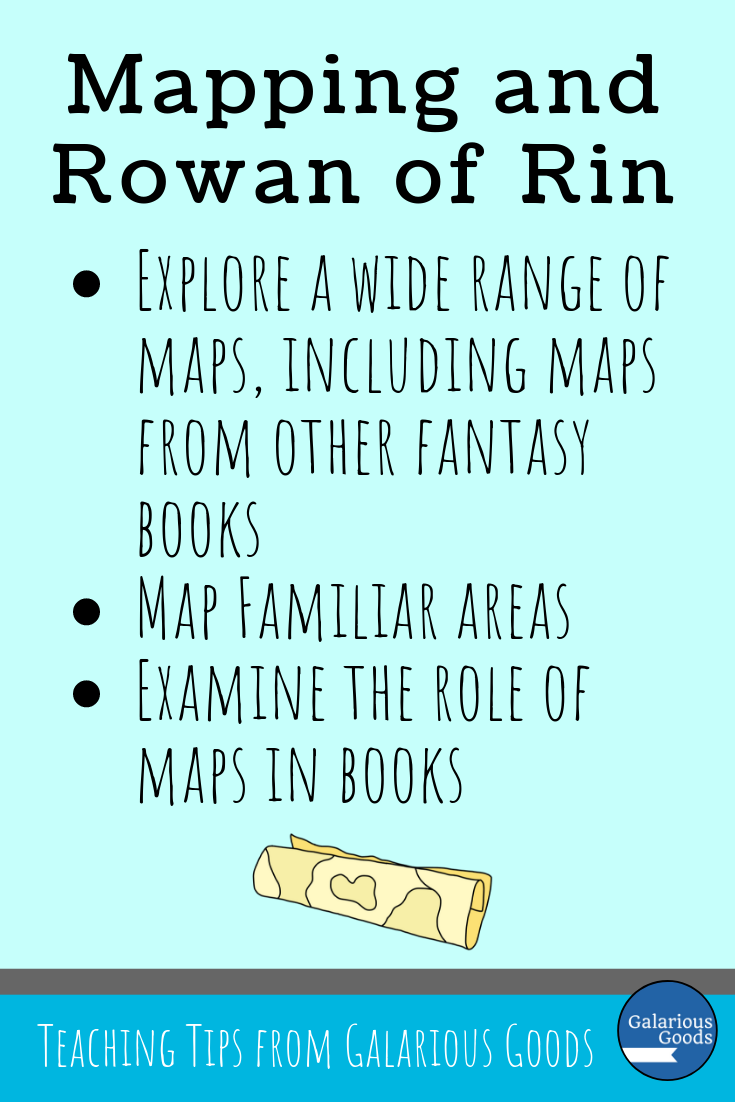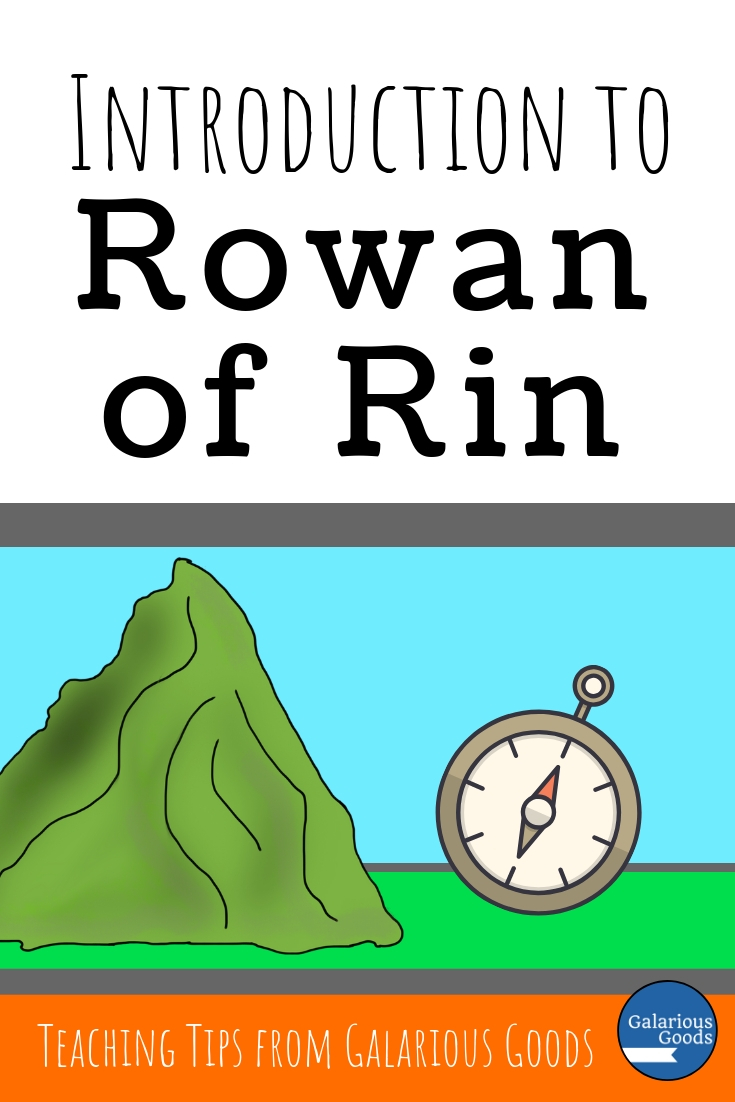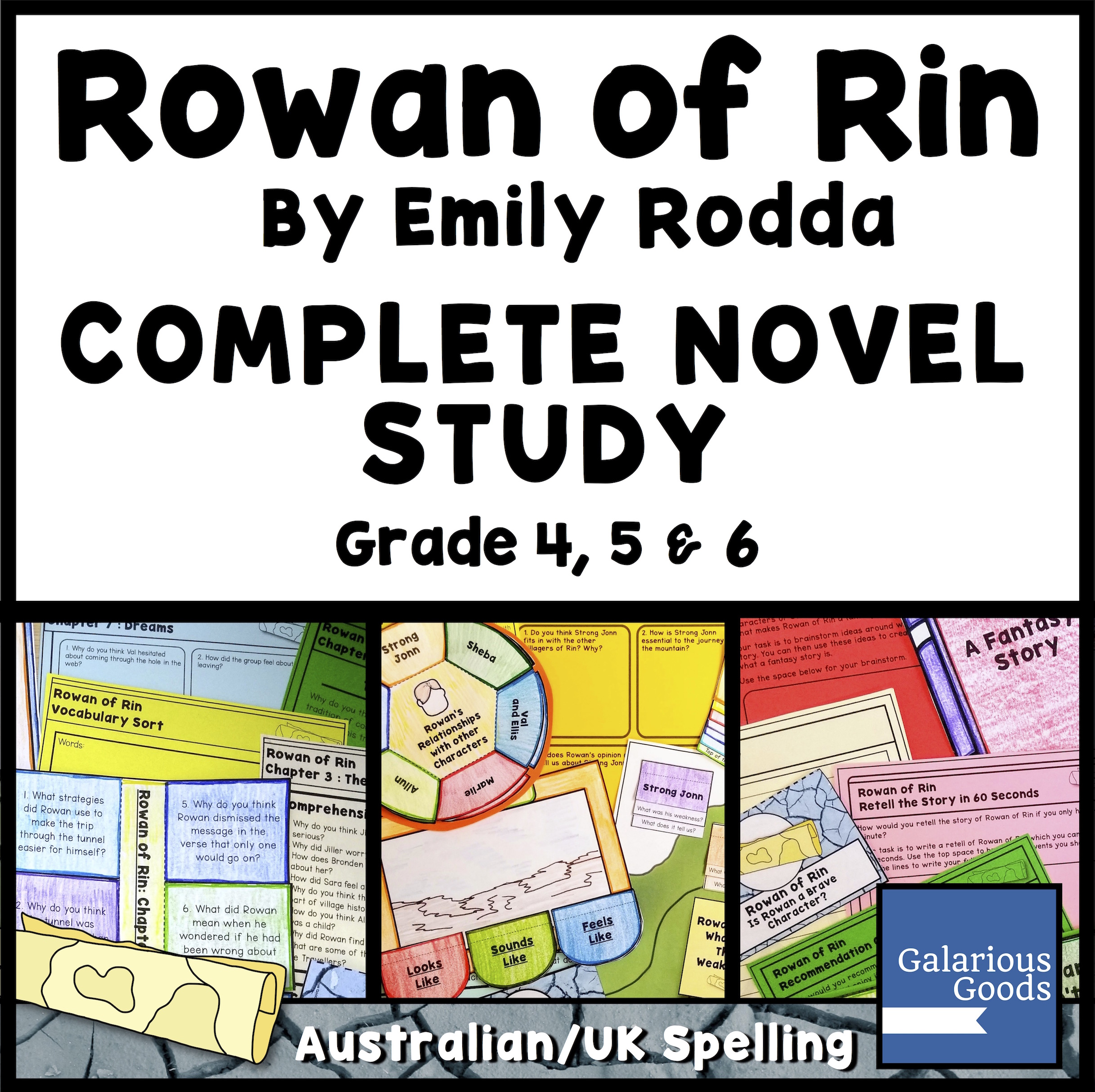5 Ways to Take Rowan of Rin Out of the Classroom
/When you explore a book like Rowan of Rin in the classroom, it can be a little overwhelming knowing where to start. It’s an entirely new world - similar, but different to our own. There’s adventure and fantasy and relationships. And how can we make connections between all of that and the world that our students live in?
Finding real world connections and real world topics to explore can help our students gain a deeper understanding of both Rowan of Rin and how we can use books as a launching pad to gain a deeper understanding of the world around us. Here’s 5 topics you can explore with your class to get you started!
1. Plan a Treasure Hunt (or go searching with a map)
Rowan of Rin is a quest story which sees Rowan and several other villagers following a map to the top of the mountain to uncover a secret.
Working with maps of different kinds is a great way to get students learning outside. Students can create playground maps or use maps of their school to ‘explore’, or you may extend your learning to an excursion to a local park or forest area where you can continue to expand map using and map making skills.
One way to explore maps is to get students involved in orienteering activities. In orienteering activities, students use maps and compasses to reach checkpoints and race towards the end. While you may not have time to complete a full orienteering course, orienteering organisations around the world have put together some great teaching activities like this and this to give your students a taste of orienteering.
Students can also create their own treasure hunt for others to follow. They can begin with an existing map of the school or create their own from scratch. They can use trundle wheels to measure distance and include distances in their maps as well as written clues to guide the seeker to the next position. As students are creating their maps, they can learn more about mapping symbols, features and keys and apply this to their own maps. And - of course - when they are finished creating their maps, they can give them to their classmates to test them out.
2. Obstacle Course
Throughout Rowan of Rin, the villagers and Rowan run into a number of obstacles on their trip up the mountain. This makes the perfect inspiration for your own obstacle course at school.
Students can look through the novel to find 5-6 inspirations for their obstacle course, then brainstorm different ways they could create the obstacles. You may like to offer them a range of equipment they could use for their obstacle course, or ask them to be creative with sports and playground equipment and things like tape, string or elastic! Students also need to consider things like safety, how long it would take students to complete the course and whether they should offer different difficulty levels.
Once students have planned their course, they can set it up and test it with their classmates. They may like to introduce it to other students in the school as well, combining it with some retelling of Rowan of Rin so students who haven’t read the book can understand the context of the obstacles.
Students can also create maps, diagrams and posters of their obstacle course or take photos or video of students completing the course which they can share or present for others to enjoy.
3. Team Games
Rowan finds that he has to work with the others a number of times to get through the obstacles to the top of the mountain. Learning to work together is a great activity for school students and can allow them to reflect on the difficulties that Rowan and the others may have experienced as they worked together.
There are several team games which you can relate back to events in Rowan of Rin:
Tug of War
Rowan and the others have to work together in the swamp to stop each other from being drawn into the mud. They end up working together to pull each other out.
Students can work together in teams to ‘pull each other from the swamp’ through playing tug of war. To extend the challenge, students can be broken into four teams with 2 ropes intertwined to make a cross.
See What I Mean
Rowan misunderstands Strong Jonn’s feelings about him - a misunderstanding mostly caused by a lack of communication.
Students can explore the importance of good communication through playing See What I Mean. One person draws a picture using simple shapes. Another person describes the picture to the other students in the group or class who try to replicate the picture. The better the description, the better the drawings.
Minefield
Another way to explore communication is through creating a simple obstacle course, and having students assist a blindfolded student through the obstacle course. The course can be slightly changed between students to keep the difficulty up.
As well as exploring communication, this activity also connects to the way Rowan and the others move through the cave and the tunnel on the way up the mountain.
Don’t Wake the Dragon
This is a really easy game with a direct link to the dragon in Rowan of Rin. In the original version, students work to line up from shortest to tallest - without making a sound and ‘waking’ the dragon. When they are all lined up, they simultaneously call out ‘boo!’ to wake the dragon.
To extend this idea, students can line up from oldest to youngest or in alphabetical order by their names.
4. Spiderweb
During Rowan of Rin, the villagers come across a forest filled with spiders and are required to move through spider webs to keep moving forward. Spiderweb is another team building game, but this one relates even closer to the book.
Students can work together to make a spider web by weaving string between two fixed places (the string can be held to the poles or trees or walls with tape). Holes should be made which are big enough to pass students through, and if you are going with the more difficult version of the game - there should be enough holes for every student in the team, plus a few more.
Students then need to work together to get through the ‘web’ without touching the web in any way. For the harder version, each ‘hole’ in the web is closed once a student is through it. Students ‘win’ the challenge when everyone is through the web.
5. Book Walk
This is a really easy way to get students and Rowan of Rin outside. Students bring their books with them and take a walk to another place in the school. When they arrive, a student may read a pre-prepared section of their book, or the teacher can read a part of the book, or a few students can act out a part of the book. You may even organise to visit other classrooms to share a little bit of your book.
By taking students on a book walk, you can show them that reading is a wonderfully portable activity, and source a few new places in the school for reading to happen. And students can see that learning is never restricted to the classroom.


























